This post contains affiliate links. We may get paid an affiliate commission if you buy something or take an action after clicking one of the links on this web page.
Last Updated: August 3, 2019
Five years ago the $300+ production knife market was a frontier town, with just a few big names able to operate successfully at these empyrean price points. Two of the biggest were Chris Reeve Knives and Strider. For a long time the line between production and custom knives was drawn by these two companies.
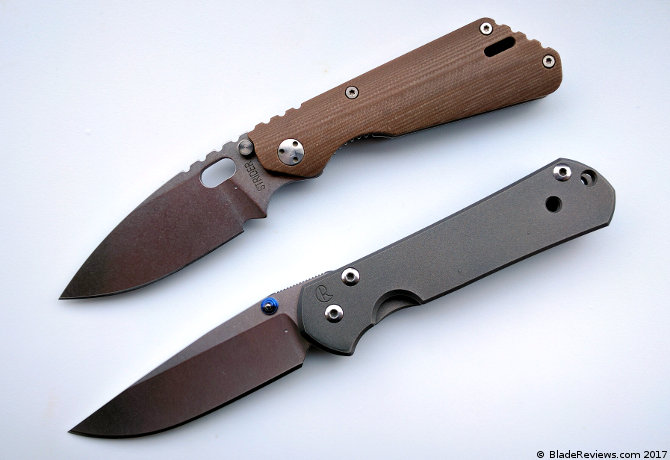
But you already know all that. They may just be two products in a now-crowded space, but years of archived forum texts and reviews will show that the Sebenza and the Strider SnG and their variants are among the most talked-about production knives ever made. Denigrate them, worship them, collect them, avoid them – it’s practically a rite of passage to have some kind of strong opinion about these knives.
They’re legends. But legendary is one thing and utility is another. Mythical statuses don’t really befit something we throw in our pocket and use to break down boxes. So I’ve procured, carried, and tested the Small Sebenza 21 and the Strider PT CC to see which knife will stand triumphant in the BladeReviews Showdown Arena. Let’s treat these hallowed blades with a certain familiar contempt, see how they work as knives, and discover which comes out on top.
General Dimensions
The specs for the knives are:
| Small Sebenza 21 | Strider PT CC | |
|---|---|---|
| Overall Length | 6.875” | 6.5” |
| Blade Length | 3” | 2.75” (2.1” cutting edge) |
| Weight | 3 oz. | 2.3 oz. |
| Blade Thickness | .13” | .13” |
| Handle Thickness | .43” | .40” |
| Blade Material | S35VN | S35VN |
| Handle Material | Titanium | Titanium/G-10 |
| Country of Origin | USA | USA |
These are both canonical choices for a high-end, smaller-sized EDC blade.
Blade Geometry and Cutting Performance
The Sebenza has a nuanced hollow grind that removes enough material to make it a capable slicer, but leaves meat behind the edge to dispel any concerns of frailty. It just gets out of the way while you work with the blade – just like a good grind should.
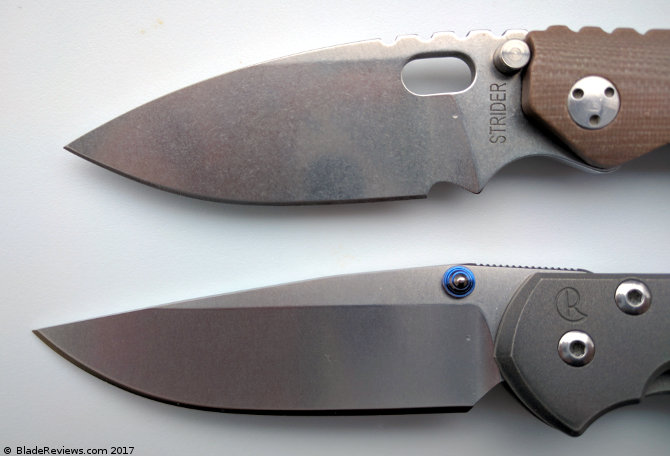
Starting with an equally thick stock, Strider decided to lean into toughness with a gradual flat grind. In extreme situations it might be able to soak up more abuse than the Sebenza, but when it comes to cutting tasks – even heavy duty cutting tasks – it is worse. Not terrible, but you’ll definitely have intimations of wedgeiness as you cut with it.
So unless you value durability over all else in a small EDC knife, the Sebenza has the clear advantage here.
Winner: Sebenza
Blade Steel
Made in 2016, my Sebenza has S35VN blade steel. The sequel to S30V, S35VN brings additional positive characteristics to the standard-setting original. There’s a tendency in high-end steels to get too esoteric too quickly. ZDP-189, S90V, M4 – these kind of steels trade in extremes. They appeal to enthusiasts and lose the everyman. S35VN is my favorite super steel because it offers high levels of performance while remaining accessible, easy to sharpen and maintain. On my Sebenza it is superb.
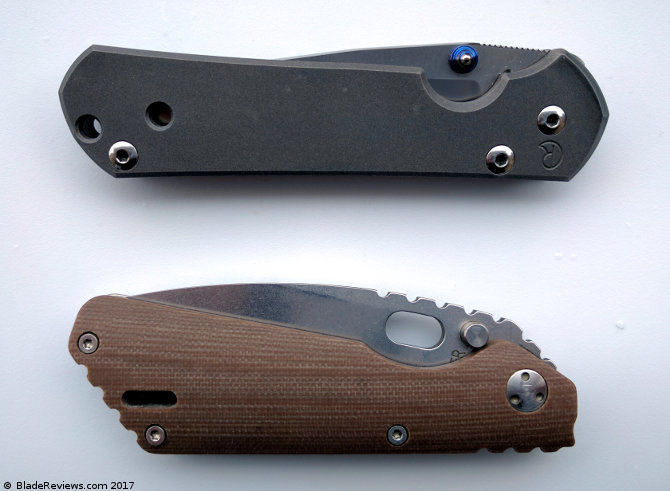
The steel on my PT is…also S35VN, also superb. There may be a difference in heat treat or Rockwell, but in use I’ve noticed no difference, so this category can only shake out one way: a draw.
Winner: Draw
Handle Construction
The phrase “beautifully machined” is a tired one, but it assuredly applies to the Sebenza: its titanium scales have been meticulously attended to, inside and out. The media blast is consistent, the chamfers precise, the construction rigid, reliable, and handsome.
The PT’s contoured G-10 show side scale, integrated backspacer, and titanium locking side make for rock-solid build quality and surprisingly light weight – you wouldn’t think this knife would be lighter than the Sebenza, but it is. Nothing about the PT immaculate, but everything feels right, and it’s a pleasure just to hold. Despite its “Duty Tool” attitude, the PT CC feels like a handcrafted luxury item – which, of course, it is.
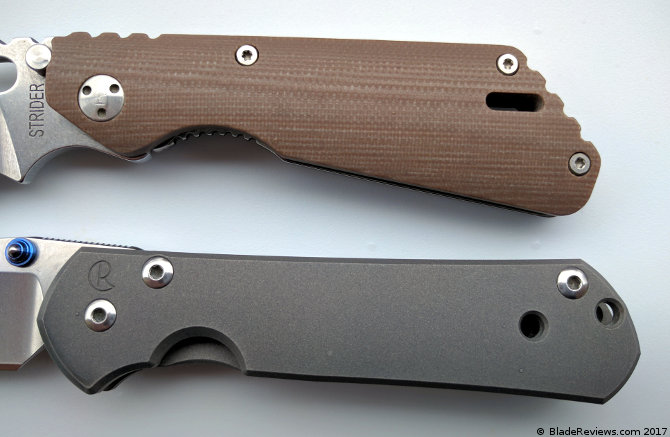
Really, this is a difference is between cold and warm finishes: the precision of the Sebenza vs . the inviting luxury of the PT. in the end, I think I’m going to give this one to the PT. It may not show the same attention to detail as the CRK knife, but its handle is smartly designed and well put-together.
Winner: Strider PT CC
Ergonomics
Neutral ergonomics are always good, even when they aren’t inspiring. The Sebenza is serviceable in all relevant grips. Each angle and cut in the handle serves a purpose. The edge chamfering lends dimensionality. The clip rests just between the middle and forefinger. Even sub-ergonomic details like the cut in the lock bar release are finely-tuned. The Sebenza design has been fussed over and it shows.
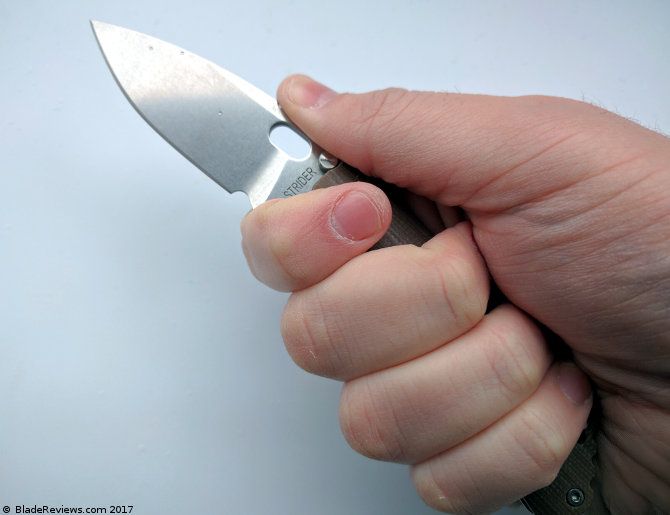
With a double finger choil the PT isn’t ergonomically neutral. You’re expected to hold it a certain way, but that way works so well. And credit to Strider for making the forward choil roomy enough: many knife makers shrink it down and ruin the point. After several years and many knives in between the PT’s ergonomics still remain at or near the top in my collection.
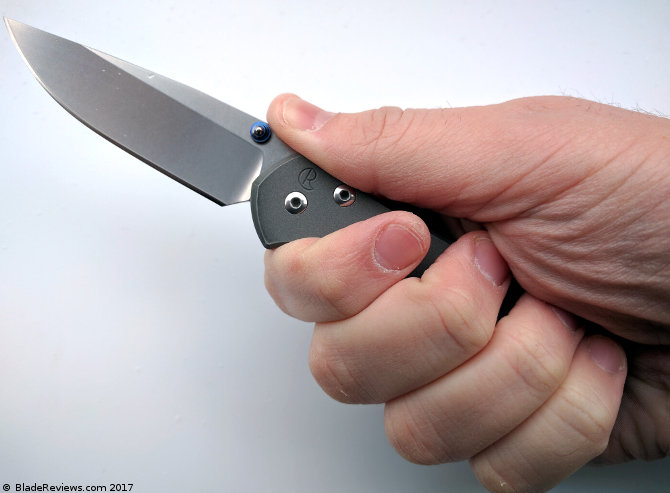
This was a tough category: the neutral, versatile, but never extraordinary ergos of the Sebenza, or the more restricted, more refined design of the PT. It came down to this: which knife do I holding and using more? The answer is the PT CC.
Winner: Strider PT CC
Pocket Clips and Carry
CRK’s double dip clip gets a lot of love. For the most part, it’s deserved. It did lose a little tension over time, but nothing catastrophic. Retrieving and stowing the knife is painless. Retention is strong and sure, and the knife itself so trim and thin that carry is totally effortless.
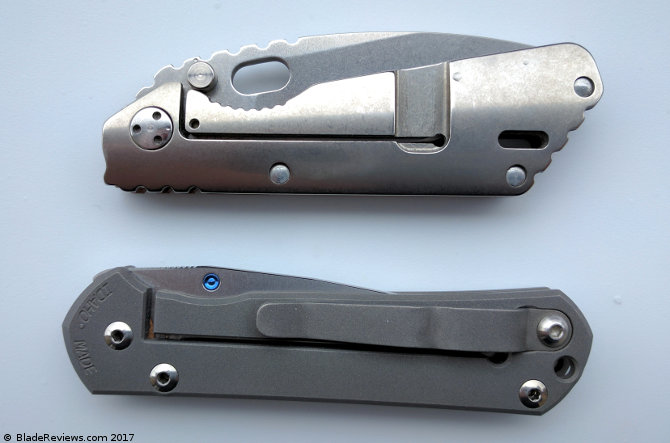
The clipless PT CC comes into this category at a disadvantage. It is, however, quite good carried loose in the pocket. It can be hard to feel comfortable with a $300 knife banging around alongside coins, keys, and other jagged pocket paraphernalia, but I think the PT is beefy enough to take it.
Both knives are in the top tier in their respective carry categories. However, the PT is fighting a losing battle due to its lack of a clip. Given the choice, I’m always going to choose pocket carry. The Strider is great in the pocket, but the Sebenza wins here.
Winner: Sebenza
Deployment
A strong detent and custom washers make opening the Sebenza a different affair than its more conventional cutlery brethren. I enjoy its unique calibration. It’s smooth, but provides plenty of feedback throughout opening. You can also flick it open once the knife is broken in a bit.
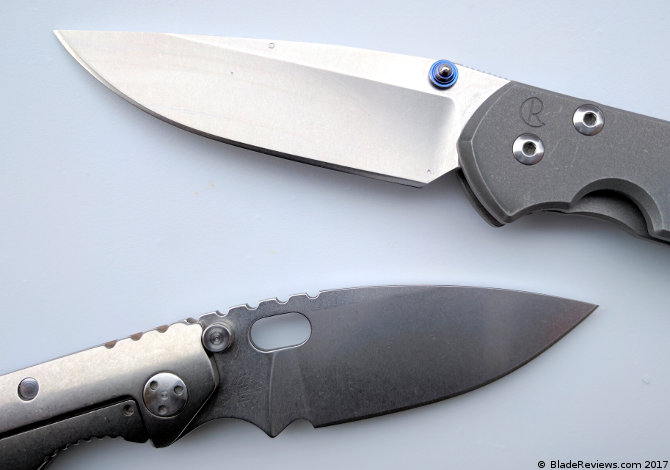
The PT CC is more conventional: nice and poppy and well-tuned. You can flick it out with minimal effort, or slow roll it without having to climb a mountainous detent. The oval is intuitive and the blade stops work okay as thumb studs. I tend to run this knife with little lubrication and there is no discernible decline in its action.
It is tempting to give the Sebenza the nod here, because it is more enjoyable to open and close. However from a practical point of view I have to give it to the PT. It is just as reliable, but faster and without the learning curve.
Winner: Strider PT CC
Lockup
Like the deployment, the Sebenza’s frame lock is different than the industry standard – and in this case I think better. You can’t trick it into locking up less, and there is absolute, positive rigidity once it’s open – not even a hint of play in any direction. Whether it’s the tolerances, the lock geometry, the lock bar tension, or the alchemy between all three, this is as good as folding knife locks get.
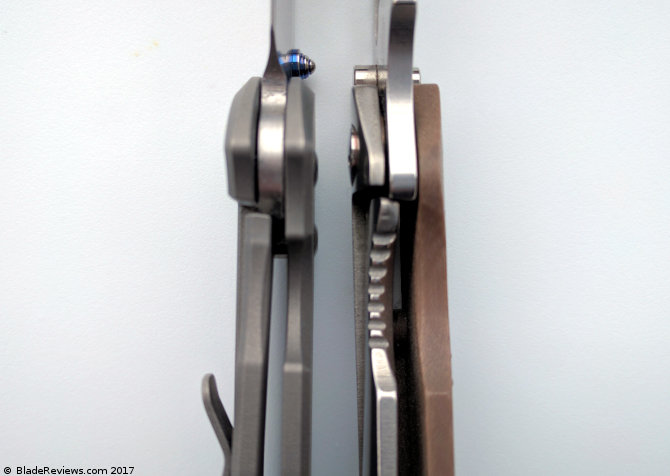
The frame lock on the PT is less exalted, but still very good. It may not have the world-beating tolerances of the Sebenza frame lock, but there is nothing to complain about in a practical sense.
It isn’t always the case that the original remains the best, but the Sebenza’s frame lock is still a marvel.
Winner: Sebenza
Price
These are both expensive knives. The Sebenza costs $350. The PT CC cost $300 when I bought it but appears to have gone up to $320 since then. At that price there’s about a 10% difference between it and the Sebenza. I love both of these knives but let’s be real here: you don’t need a $300+ knife. You buy a Sebenza or a Strider because you love knives and you want to see what can be achieved when price is not a concern.
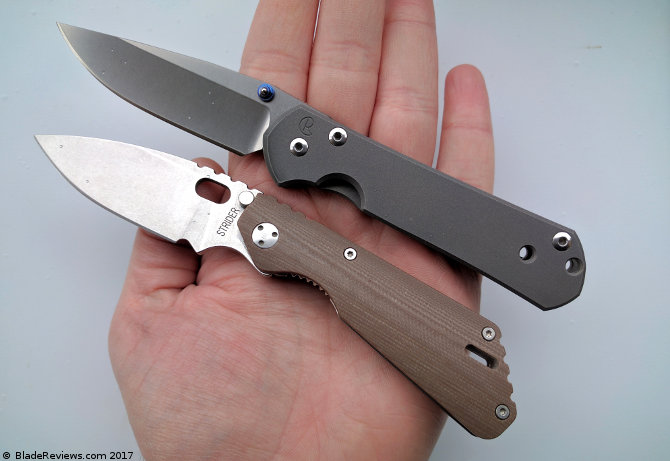
Small Sebenza 21 vs. PT CC – Some Objective(ish) Final Thoughts
This is an iconic matchup, so it’s disappointing that it ends in a tie. Kind of like an action movie ending with good guys and bad guys both out of ammo and walking away shrugging their shoulders.
But in a way that’s fitting, particularly when you take into account the high price tags of both knives. As landmark products of the high-end folding knife market, the Sebenza and the PT should hold their own against the other, and they do. The Sebenza is the better cutter and the PT is better ergonomically, but both are pretty competent even in their respective weak areas. Prices are within spitting distances of each other, so it’s going to come down to what you value more as a buyer. However…
My Subjective Final Thoughts
When I first came up with this showdown but before I began writing it, I thought the Sebenza would blow the PT out of the water. I had just got my Small 21 and was still cross-eyed as we all get when we acquire a grail. As time and testing went on, however, I came to appreciate my long-neglected PT CC again. What I thought would be a blowout became a very close race.
That being said, for me the Small Sebenza 21 does still win. I like the blade better, I like having a pocket clip, and the incredible tolerances make for something that is 100% reliable compared to the solid but idiosyncratic PT. Ergonomics are very important, and the PT is great in this area, but the Sebenza offers a more rounded package. But having completed a leg of the knife buyer’s journey by acquiring a Sebenza and a Strider, I can tell those still on their way to these landmark blades that no matter which you pick, you’ll be satisfied.
If you are considering buying a Strider PT or a Chris Reeve Knives Small Sebenza 21, I recommend purchasing them at BladeHQ or KnifeArt. By purchasing things through any of the links on this website you support BladeReviews.com, keep the website free of annoying banner ads, and help produce future reviews. Thank you very much.
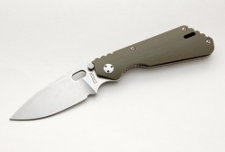
Strider PT – $300.00
From:BladeHQ KnifeArt
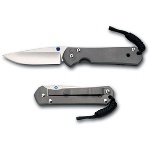
Chris Reeve Knives Small Sebenza 21 – $350
From: BladeHQ KnifeArt
Well done. Thank you. I placed an order for a small Sebenza just this week. It will take about 3 months, but it will be worth the wait. I’m getting my name engraved on the back. This knife is something that I can pass down to one of my sons.
Hey Earl,
Glad you liked the Showdown. The wait will definitely be worth it. If you’ve never owned a CRK before you are in for a particular treat. And I can think of few knives that are better suited to passing down than a Sebenza. Enjoy it!
Ben.
I think the Sebenza has soldiered on this long partly because of the blade grind and geometry you mentioned. It just works exceptionally well. For a knife in that price range I don’t think a premium grind is too much to ask. When I want a full flat grind I’ll use a Spyderco.
With you there Mark. I guess it could be argued that the PT’s grind is “premium,” just also thick, designed for different cutting chores. But the Sebenza doesn’t seem significantly weaker and just slices so much better. I’ve heard tell that newer Striders are ground thinner, but I’ve yet to confirm.
Ben.
Great post Ben. “Solid but idiosyncratic” is a perfect description of the PT. The Small Sebenza feels more refined, calculated, and precise. That being said I sold my Seb for the PT. I enjoy the size and ergonomics of it more than anything. The cutting performance is…. Alright.
Thanks Won! Sometimes the thing that brings us the most pleasure isn’t the strictly “better” one. And ergonomics are very, very important. That was a key category and a huge argument in the PT’s favor.
Ben.
Thanks, Ben!
Earl
For me, points off to the Strider for the proprietary pivot screw. The tolerances of the Sebenza justify its price (if anything can) but I think Striders (and Hinderers) are overpriced for what you actually get. Just MHO.
Yup, the proprietary pivot is annoying. The only reason I can live with it here is that it is easy enough to jury-rig something that can turn it – either through paper clip origami or with a tiny spanner wrench. On principle though it’s vexing.
Yeah, I find it hard to say even a Sebenza is “worth” the money, but those tolerances do have a very practical application when it comes to reliability and disassembly. To be honest I’m starting to feel that any knife north of, say, $120 is probably too much money for what it is. So when I spend $300+ on a blade, I’m wearing my Enthusiast Hat and have to bury such considerations away.
What a valuable comparison. I’m a big Mnandi fan now slowly psyching myself up to buy my first Sebenza and this analysis helps a lot.
Thoughts on choice of Lg vs Small Seb?
Hey R.D.,
I’ve handled a Mnandi briefly, very nice knife, and am in the reverse position. Considering a Mnandi to supplement my Sebenza. Price hangups aside I think there’s room in my life for both.
As for size, maybe some others can chime in here, but my two cents is: I always thought I wanted a Small, and I’m glad I got it, but at the same time I am coming to appreciate larger knives and I think the Large might be the “truest” iteration of the Sebenza. If you’re into that mid-size profile (3.25-3.5″) I think the Large might be the way to go. If only there were an easy way to handle both.
Ben.
You have been quite unfair to the Strider in one respect (I hope my sarcastic tone was conveyed over the ether). The Strider PT has a tip-up pocket clip while the PT CC has no clip.
Thanks Christopher, I was hoping somebody would bring this up in the comments. I haven’t personally had the chance to try out a Strider knife with a clip, so I can only speculate as to how it would affect the outcome. My guess is that the Sebenza would still win out: it’s a narrower carry, like a pack of gum clipped to your pocket. But it definitely would have been a closer call, that’s for sure.
Interesting that Strider’s website says ” The initial goal was to provide a field service knife constructed with the finest components available, yet affordable to the average enlisted man and within his maintenance abilities.” I can’t say for certain but as a veteran I wasn’t able to afford $300 for such a luxury. $100 would have been a stretch as a married Spec. 4. I have carried a pocket knife from age six and always appreciate quality but that range of pricing is out of reach for the average enlisted man. Please do a side by side of a more affordable offering that would run in the $75 to $125 range please.
Chris,
Cool idea! I wonder if Ben is up for the task? I’d support the effort. But the short answer is that a $300 knife will not cut any better then a $100 one. If you were to put this against the Spyderco Para 2 the knives will both function admirably.
Dan
Hey Chris,
I find that kind of marketing pretty disingenuous too – and Strider is far from the only company to engage in it. Like Dan says, there is no – or very little – real increase in performance increase for the extra money.
I’ve actually been considering doing another shootout for a couple of knives in that price range – might take some time to settle on the competitors but I’m definitely interested in the idea, so stay tuned!
Ben.